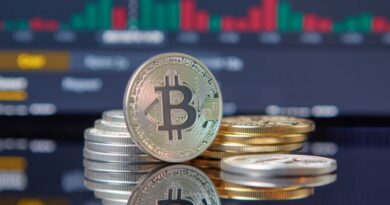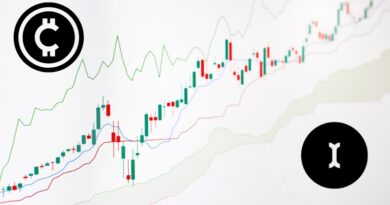Bitcoin Set to Surpass Gold in Market Dominance Says Fidelity
Is Bitcoin About to Overtake Gold? Fidelity Thinks It’s Possible
Investors have always looked to gold as the go-to safe-haven asset. But now, Bitcoin is giving gold serious competition — and it might not be long before it takes the lead.
That’s not just speculation. A recent report from Fidelity, one of the largest financial institutions in the world, suggests that Bitcoin could flip gold’s market dominance — maybe even sooner than we think.
Let’s break down why.
What Fidelity Is Saying About Bitcoin vs. Gold
Fidelity’s research arm recently released a report comparing digital assets like Bitcoin to traditional stores of value like gold. Their main point? Bitcoin is gaining ground fast, and it may soon overtake gold.
Why do they believe this?
- Bitcoin’s market value keeps rising.
- More investors are treating it like “digital gold.”
- It has qualities that some say make it even better than gold in certain areas.
While gold has been used for thousands of years, Bitcoin is just over a decade old. Yet, its current market cap has already crossed the $1 trillion mark earlier this year.
Still, gold’s market cap sits around $12–$13 trillion. That seems like a wide gap — but it’s narrowing faster than many expected.
Breaking Down Bitcoin’s Advantage
So, what gives Bitcoin the edge?
Here’s how it stacks up:
1. Scarcity
Gold is scarce, but we don’t know exactly how much is still out there — new reserves are still being discovered.
Bitcoin, on the other hand, has a fixed supply. Only 21 million Bitcoins will ever exist. That built-in cap creates a sense of digital scarcity that many investors appreciate.
2. Portability
Try carrying gold bars across borders. Not easy.
Bitcoin can be stored on a simple digital wallet and transferred in minutes anywhere in the world. That makes it much more portable and flexible — especially in a fast-paced digital economy.
3. Transparency
Bitcoin’s blockchain allows anyone to verify transactions.
Gold trading happens through banks and centralized exchanges. It’s much harder to see what’s really happening behind the scenes.
4. Divisibility
Bitcoin can be divided down to 0.00000001 BTC — also known as a satoshi.
This allows everyday users to own a fraction of it. With gold, buying small amounts often comes with extra fees and isn’t nearly as convenient.
5. Accessibility
Anyone with a smartphone or computer can access Bitcoin. You don’t need a broker. You don’t need a safe. You don’t even need a lot of money.
That kind of accessibility is helping more people — especially younger investors — jump in.
What’s Fueling the Shift Toward Bitcoin?
Several trends are working in Bitcoin’s favor.
Institutional Adoption
Big financial institutions are no longer ignoring Bitcoin. Companies like Tesla, MicroStrategy, and Square have added it to their treasuries. Even BlackRock is offering clients access to Bitcoin ETFs.
The more mainstream it becomes, the more money flows in.
The Tokenization Boom
Fidelity also pointed out the growing tokenization trend — the idea of turning real-world assets into digital tokens on a blockchain.
This could be a game-changer for real estate, stocks, and more. And at the center of it all? Infrastructure built on blockchain technology like Bitcoin.
Changing Investor Behavior
Young investors are growing up in a digital world. They’re more comfortable with crypto wallets than coin vaults.
A growing number of Millennials and Gen Z prefer holding Bitcoin over gold. They see it as a smarter, more modern asset to beat inflation and diversify investments.
Can Bitcoin Really Flip Gold?
That’s the big question. Fidelity seems to think it’s possible. But when could it happen?
No one knows for sure. Some say in the next 5–10 years. Others think it could take longer. But with recent price surges and mainstream momentum, Bitcoin is clearly on an upward path.
Here’s what would need to happen:
- Bitcoin’s price would need to rise significantly — possibly above $600,000 per coin — to match gold’s market cap.
- More institutions and governments would need to adopt and accept Bitcoin.
- Continued improvements in the tech and user experience.
- Confidence in its long-term value needs to grow — especially among traditional investors.
How Should You Think About This as an Investor?
Let’s be real — the idea of Bitcoin beating gold can sound bold. But exploring both assets makes sense.
Here’s why:
- Diversification: Holding some gold and some Bitcoin can balance your portfolio.
- Hedge against inflation: Both assets have performed well when inflation runs high.
- Value preservation: Gold is proven, Bitcoin is promising. Both play different roles.
If you’re unsure, start small. Many platforms allow you to buy fractions of a Bitcoin — even $10 worth.
What Makes Digital Gold Different From Real Gold?
The term “digital gold” gets thrown around a lot when referring to Bitcoin. But let’s make one thing clear — they’re not the same. They have key differences.
Think of gold like a fortress. Strong, stable, reliable. It doesn’t change much. Bitcoin, though, is like high-speed fiber-optic cable — fast, agile, and still developing.
Here are a few differences to keep in mind:
- Gold: Physical, heavy, mined from the earth
- Bitcoin: Digital, light, mined with computers
- Gold: Used in jewelry, electronics; slow to sell or move
- Bitcoin: Used globally; easily transferred with a tap on your phone
Which one is “better”? That depends on your goals and risk tolerance. Some prefer gold’s long history. Other folks are leaning toward Bitcoin’s future.
The Bottom Line
Bitcoin isn’t replacing gold overnight. But the gap is closing fast.
Fidelity’s insights add weight to the idea that Bitcoin is no longer just a trend — it’s becoming a serious player in the world of valuable assets.
Whether you’re a longtime investor or just getting started, it’s worth watching how this shift plays out.
Are you prepared for a world where Bitcoin stands shoulder to shoulder with gold?
Maybe… even higher?









